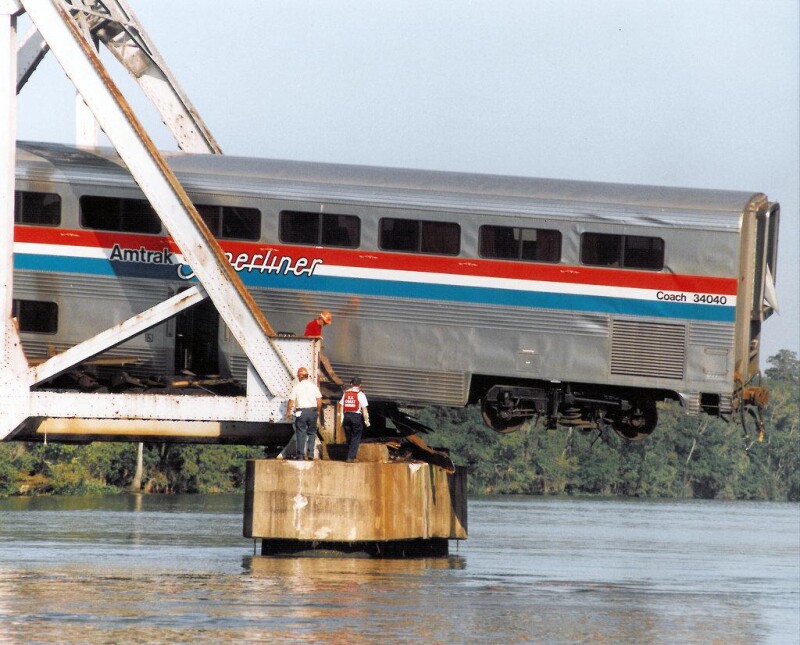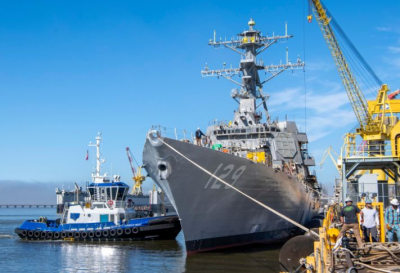It was 2:45 a.m., Sept. 22, 1993, the fog low and thick on the Mobile River in southwest Alabama. Willie Odom was under the control of Warrior & Gulf Navigation Co.’s towboat Mauvilla, pushing six barges along the river.
Odom was looking for a place to pull his tow over to the riverbank to wait for the night air to clear.
At the same time, the Sunset Limited, an 11-car Amtrak train carrying 206 passengers, was racing through the darkness and fog at 72 mph on its way from Los Angeles to Miami.
Believing he was headed upriver, Odom, without a chart or compass and lacking in radar proficiency, instead moved his tow into Big Bayou Canot, a shallow body of water adjacent to the Mobile River. Thinking he spotted another tow waiting out the fog, Odom headed for it in hopes of using it as a temporary mooring. In the wheelhouse, Odom felt a “bump.” He backed the tow away, losing two of the barges from the tow.
Odom did not realize he had hit the Bayou Canot Railroad Bridge and pushed a girder 38" out of alignment. Consequently, no mayday came from the tow.
At approximately 2:52 a.m., the Sunset Limited barreled onto the railroad bridge, the lead locomotive slamming into the displaced girder.
Three of the train’s locomotives and four of its cars plunged into Big Bayou Canot. At 3:08 a.m., a mayday finally went out.
In the wake of the disaster, 47 people were killed and 103 were injured, making it the deadliest train accident in U.S. history.
The subsequent investigations would set in motion a fundamental change for the tug and barge industry — Subchapter M.
“[Big Bayou Canot] changed a lot of things like accident response, wheelhouse training, casualty reporting, and licensing,” Jennifer Carpenter, then a senior vice president with the American Waterways Operators (AWO), told WorkBoat in a 2013 interview. (Carpenter is now AWO’s president and CEO.)
Hopefully, the powers that be will find an answer that will make the allision between the 985' containership Dali and the Francis Scott Key Bridge in Baltimore on March 26 less likely to happen in the future.
The investigation is ongoing. But a ship that loses power, which causes it to lose steering, is a ridiculously engineered system for 2024 if, indeed, that is what happened. Surely, our marine engineers and naval architects can find a way to design ships with a failsafe for just such a scenario.





